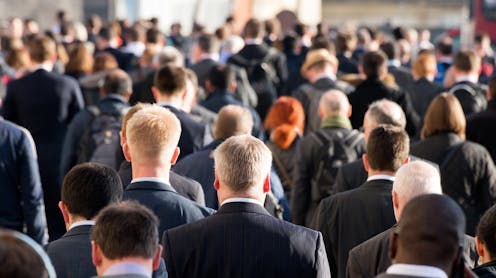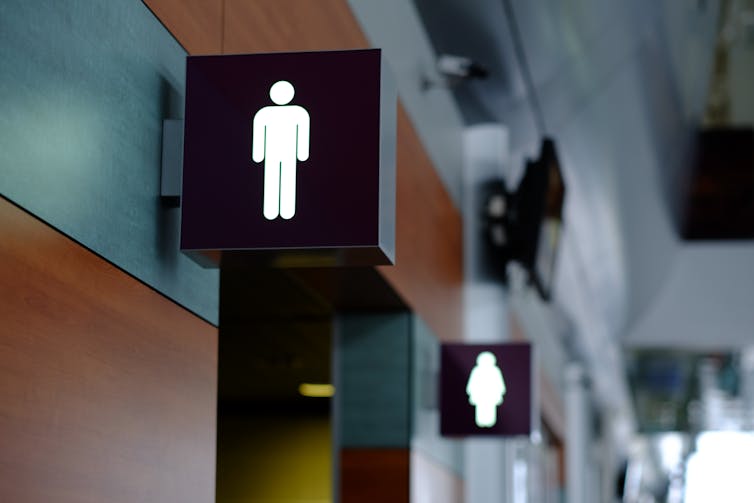
The UK Supreme Court ruling backing the “biological” definition of a woman has been hailed by many as providing clarity on the law. But far from the matter being settled, it has raised complex questions, particularly when we consider that half of all transgender people are trans men. It even raises the possibility of trans men being excluded from both men’s and women’s spaces.
The court unanimously agreed that, regardless of any gender reassignment or possession of a gender recognition certificate (GRC) recognising them as female, transgender women should not be recognised as women for the purposes of the Equality Act 2010. This means that access to single-sex spaces should be determined by biological gender assigned at birth.
Meanwhile, the Equality and Human Rights Commission has said it will “pursue” the NHS unless it changes its gender policies. The NHS policies currently state that transgender patients should be accommodated in accordance with their self-identified gender, based on appearance, name and pronouns.
Want more politics coverage from academic experts? Every week, we bring you informed analysis of developments in government and fact check the claims being made.
Sign up for our weekly politics newsletter, delivered every Friday.
For many complex reasons, trans men generally feature far less in the public discourse around trans issues. Trans men are currently under-researched and rarely considered by the mainstream media or academic literature.
The Supreme Court’s own summary of the case sets out the issue in terms of the definition of “woman”. But it is clear that the judgment applies equally to trans men as it finds that each of the terms “man”, “woman” and “sex” in the Equality Act refer to biological sex. The court concludes that any other definition would be “incoherent and unworkable”.
The Office for National Statistics estimates there are roughly equal numbers (48,000) of trans men and trans women in England and Wales. This is supported by data from the US, which also shows roughly equal populations of trans men and trans women.
Issues for trans men
Those who support a biological definition of sex have framed their position as one which protects women’s rights and keeps women’s spaces safe by excluding men. By legal definition, that now includes trans women. However, it does not include trans men, who would have been born biologically female.
This judgment means that trans men can be excluded from men’s single-sex spaces. But there may also be cases where they are excluded from women’s spaces too, despite being considered women under the ruling.
The court found that it might be proportionate to exclude a trans man from a women’s single-sex service such as counselling for survivors of sexual abuse where “reasonable objection is taken to their presence … because the gender reassignment process has given them a masculine appearance…”.
This statement highlights the flawed legal reasoning around trans men. In most circumstances they are to be treated as women, even if that creates absurdities in practical implementation. And yet, they can also be excluded from some women’s spaces if they appear too masculine. It could be argued that it is this decision which is “incoherent and unworkable”.

The Supreme Court decision repeatedly makes the point that “neither possession of a GRC [gender recognition certificate] nor the protected characteristic of gender reassignment require any physiological change or even any change in outward appearance”.
However, in practice a GRC can’t be issued without a medical diagnosis of gender dysphoria. It is very difficult for an individual to meet the diagnostic criteria for gender dysphoria without making changes to their appearance or pursuing medical transition.
Testosterone treatment means that trans men may find it easier to “pass” (be perceived as the gender they identify with) than trans women. Testosterone generally causes facial hair to grow, and creates a more masculine physique and a deeper voice without the need for any additional procedures.
There are no official statistics, but a 2022 report by the advocacy group TransActual found that around 90% of trans respondents have accessed hormone therapy or surgery, or hope to do so in the future.
This likely means that a majority of the 48,000 estimated trans men in England and Wales are likely to present as masculine, and be perceived as cisgender men. This is where any implementation of the Supreme Court’s ruling becomes complicated.
Single-sex spaces
The decision, subject to any future clarification, means that trans men are not permitted to enter men’s single-sex spaces such as men’s toilets, gym changing rooms or hospital wards. Instead, they should use the women’s single-sex spaces including communal changing areas, in accordance with their biological sex.
The justices briefly considered this issue when they gave the example of an employer requiring that a warden in a women’s or girls’ hostel be female. Before this ruling, such a role would be open to a trans woman with a GRC, but not to a trans man with a GRC.
The court stated that “a biological definition of sex would correct this perceived anomaly”. However, this means that the warden in the girls’ hostel can now be a trans man, who could well be indistinguishable from a cis man to the residents of the hostel.
There is also the concern that both trans men and trans women will expose themselves to a greater risk of harassment, which has already increased considerably, if they are forced to out themselves by using facilities which don’t align with the gender they present as.
Daniel Alge does not work for, consult, own shares in or receive funding from any company or organisation that would benefit from this article, and has disclosed no relevant affiliations beyond their academic appointment.
This article was originally published on The Conversation. Read the original article.






